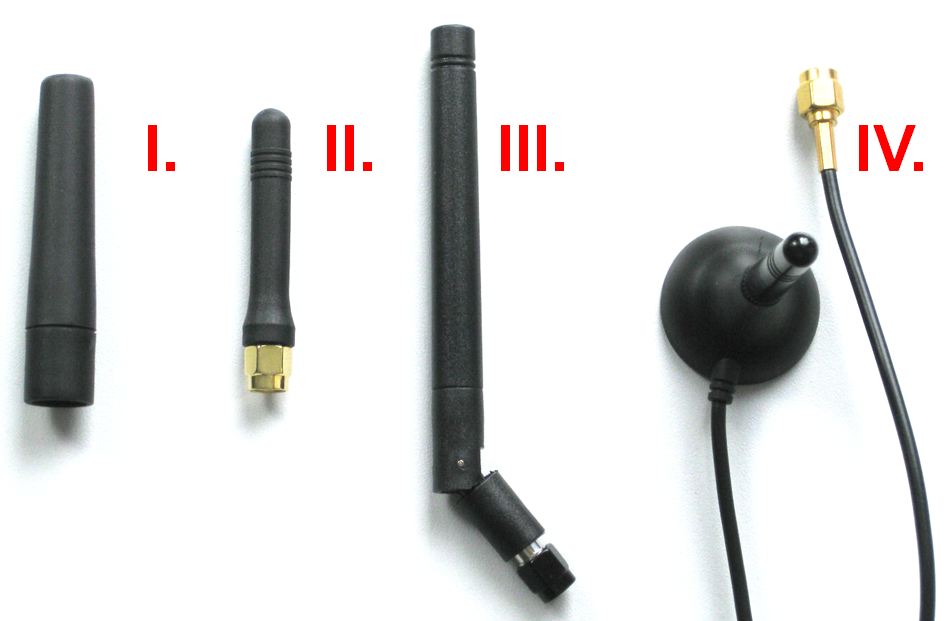The four antennas at the picture below promise to be GSM quad band or even GSM quad band plus UMTS 2100. With a low budget VNA we let the cat out of the bag. The antennas have no chance. Our lie detector is called MiniVNA Tiny and will animate the antennas to tell us their deep dark secrets. Antenna I and antenna II are typical helical cellular antennas. Both are monopole antennas and the performance will be related to the ground plane of the VNA. The size of the VNA is 66 mm x 66 mm. This means that the ground plane of the VNA will be a little bit too small. A length of 90 mm to 100 mm would be better. Anyhow, we will detect the true resonate frequency of the antennas and can estimate if it has a chance to radiate on the right band. Antenna III has a hinged connector and can be mounted in at least two directions (straight and 90 degree). The length is almost the double of antenna III and we can estimate that it is a ground plane independent dipole. Antenna IV is nothing special. It is a typical magnetic mount antenna with 2.5 meter coaxial cable (RG174). RG174 will have an estimated attenuation of 110 dB per 100 meter at 1 GHz and 130 dB of per 100 meter at 2 GHz. The estimated loss in the cable at GSM 1900 or UMTS 2100 will be 130 dB / 100 meters x 2.5 meter = 3.25 dB plus the attenuation inside the SMA plug and SMA connector. The cable loss will not interfere the resonate frequency of the cellular antenna. If you will ever look for antenna gain or have a desperate need for high signal level, then it makes sense to pay more and order antennas with a better coaxial cable.
The upper text is out of the IoT M2M Cookbook here. If you are interested in a copy of the book please do not hesitate to drop an email to harald.naumann (at) gsm-modem.de
